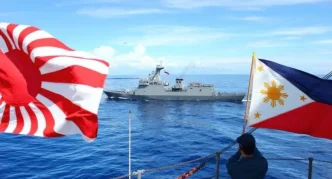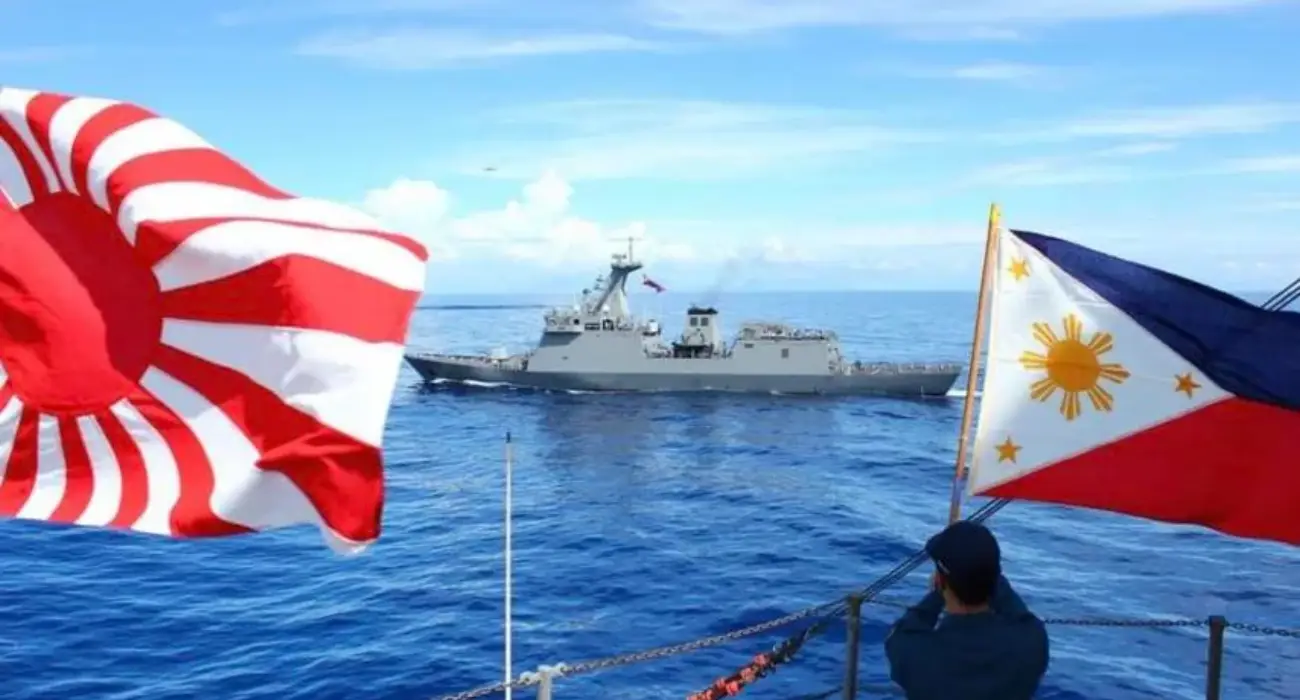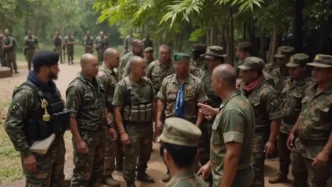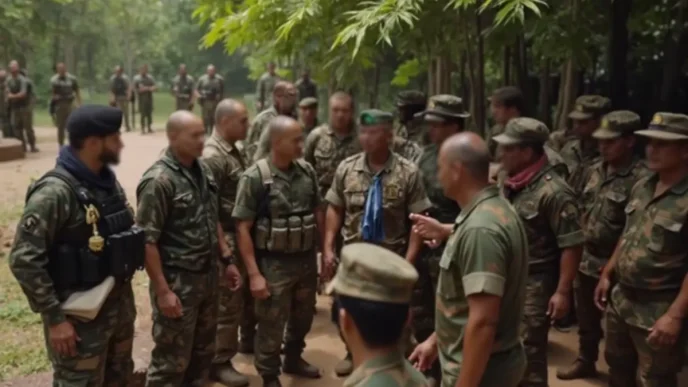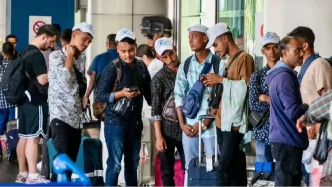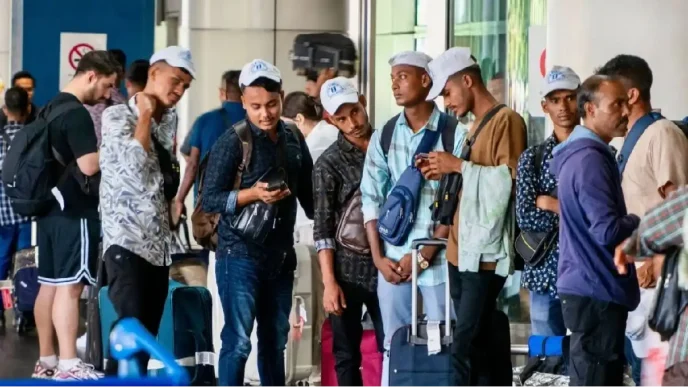In a significant display of military cooperation, the Armed Forces of the Philippines (AFP) and the Japan Maritime Self-Defense Force (JMSDF) conducted a bilateral Maritime Cooperative Activity (MCA) in the West Philippine Sea on June 14, 2025. The exercises, which follow the recent ratification of the Reciprocal Access Agreement (RAA) between the two nations, underscore a deepening strategic partnership aimed at ensuring stability and a rules-based order in the Indo-Pacific region. Amid rising geopolitical tensions, particularly over disputed maritime territories, this collaboration signals a united front in addressing shared security challenges.
A Milestone in Bilateral Defense Cooperation
The MCA involved a range of sophisticated exercises designed to enhance interoperability between the two forces. The Philippines deployed the BRP Miguel Malvar (FFG-06), an AW159 anti-submarine helicopter, a C-208 ISR aircraft from the Philippine Air Force, and search and rescue units. Japan contributed the JS Takanami (DDG-110) and an SH-60K Seahawk helicopter. Together, the forces executed communication checks, anti-submarine warfare drills, cross-deck operations, division tactics, officer of the watch maneuvers, photo exercises, and a concluding finish exercise.
The seamless coordination demonstrated during these activities highlights the operational readiness of both militaries to work together in complex scenarios. AFP Chief of Staff General Romeo S Brawner Jr emphasized the broader significance of the event, stating, “This cooperative activity is more than a display of maritime capability—it is a manifestation of our enduring commitment to uphold peace, stability, and a rules-based order in the Indo-Pacific” as quoted in an AFP statement on June 15, 2025. He further noted that with the RAA now in effect, coordination with Japan would only grow stronger and more responsive to the region’s security demands.
The Reciprocal Access Agreement: A New Chapter
The RAA, recently ratified by both nations, marks a pivotal step in formalizing defense ties between the Philippines and Japan. The agreement facilitates greater access for military personnel and equipment, paving the way for more frequent joint training, humanitarian assistance, and disaster response initiatives. During the MCA, the operationalization of the RAA was evident, as the exercises tested not only combat readiness but also the logistical and procedural frameworks necessary for sustained collaboration.
For the Philippines, the partnership with Japan is particularly timely. The West Philippine Sea, a portion of the South China Sea within the country’s exclusive economic zone, remains a flashpoint due to overlapping territorial claims, notably with China. While the MCA did not explicitly reference any third party, its location and timing send a clear message about the commitment of both nations to safeguarding freedom of navigation and international maritime law in contested waters.
Strategic Implications in the Indo-Pacific
The West Philippine Sea exercises come at a time of heightened regional tension. The Indo-Pacific has emerged as a critical theater for global powers, with maritime security, trade routes, and resource access at stake. Japan, as a key ally of the United States and a proponent of a free and open Indo-Pacific, views its partnership with the Philippines as integral to counterbalancing assertive actions in the region. For Manila, aligning with Tokyo offers not only military support but also diplomatic leverage in navigating complex geopolitical currents.
Security analysts suggest that the MCA could serve as a blueprint for future multilateral exercises involving other regional partners, such as Australia and South Korea, both of whom share similar concerns about stability in the South China Sea. The emphasis on anti-submarine warfare and communication drills during the MCA also indicates a focus on addressing unconventional threats, including potential underwater surveillance or incursions in disputed areas.
However, the deepening military ties between the Philippines and Japan may also draw scrutiny. Some regional observers caution that such activities could escalate tensions with other claimants in the South China Sea, potentially complicating diplomatic efforts to resolve disputes through dialogue. While no official reactions from neighboring states were reported immediately following the MCA, the exercises are likely to be closely monitored by all stakeholders in the region.
Operational Success and Future Prospects
The technical success of the MCA is a testament to years of groundwork laid by both nations through smaller-scale engagements and confidence-building measures. The division tactics and officer of the watch maneuvers, in particular, showcased the ability of the BRP Miguel Malvar and JS Takanami to operate in close coordination, a critical skill for joint operations in high-stakes environments. The inclusion of helicopters and aircraft further demonstrated the multi-dimensional nature of modern naval cooperation, extending beyond surface vessels to air and subsurface domains.
Public sentiment in the Philippines, as gauged through social media posts on platforms like X, appears largely supportive of the MCA. Many users expressed pride in the AFP’s participation alongside a technologically advanced partner like Japan, viewing it as a boost to national defense capabilities. Others highlighted the importance of international alliances in deterring external threats, though a smaller number voiced concerns about the risk of being drawn into broader regional conflicts.
For Japan, the MCA aligns with its broader policy of strengthening security partnerships in Southeast Asia. Tokyo has increasingly sought to play a proactive role in regional stability, moving beyond its post-World War II pacifist stance to engage in defense cooperation with like-minded nations. The RAA with the Philippines, alongside similar agreements with countries like Australia, reflects this strategic shift.
Humanitarian and Disaster Response Dimensions
Beyond immediate security concerns, the MCA and the RAA lay the foundation for enhanced cooperation in humanitarian assistance and disaster relief (HADR). The Philippines, located in the typhoon belt and prone to natural disasters, stands to benefit significantly from Japan’s expertise and resources in this area. Joint HADR exercises, potentially involving search and rescue units deployed during the MCA, could become a regular feature of the bilateral relationship, offering practical benefits to local communities.
Japan’s experience in disaster management, honed through decades of responding to earthquakes and tsunamis, could provide valuable lessons for the Philippines. In return, Manila’s strategic location offers Japan a foothold for rapid response initiatives across the region, reinforcing the mutual benefits of the partnership.
Looking Ahead: Challenges and Opportunities
As the Philippines and Japan build on the success of the MCA, several challenges loom on the horizon. Ensuring that military cooperation does not undermine diplomatic efforts to manage regional disputes will require careful calibration. Both nations must also navigate domestic political dynamics—public opinion in the Philippines, for instance, remains sensitive to foreign military presence, a legacy of historical occupations and bases agreements.
Financial considerations are another factor. While the MCA did not disclose specific costs, sustained joint exercises and the implementation of the RAA will require budgetary commitments from both sides. For the Philippines, balancing defense spending with pressing domestic needs like infrastructure and poverty alleviation could pose dilemmas for policymakers.
Nevertheless, the trajectory of Philippines-Japan relations appears firmly set toward closer integration. The MCA in the West Philippine Sea is not merely a one-off event but a stepping stone to a more robust security architecture in the Indo-Pacific. As General Brawner hinted, the partnership is poised to evolve in response to the region’s complex demands, potentially encompassing new areas of collaboration such as cybersecurity and counterterrorism.
As both nations chart this course, the international community will be watching closely. The ripples of their cooperation could reshape alliances and influence the delicate balance of power in one of the world’s most contested maritime regions. For now, the joint maneuvers of the BRP Miguel Malvar and JS Takanami stand as a powerful symbol of unity and resolve in uncertain times.

